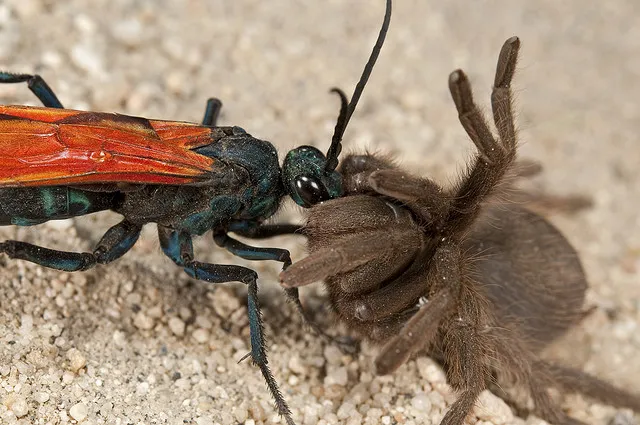Understanding Tarantula Hawks
Tarantula hawks are among the most formidable wasps on the planet, renowned not only for their size and striking appearance but also for their hunting prowess. These wasps are a fascinating subject for anyone interested in entomology or the natural world. Identifying them correctly and understanding their behavior is crucial for both appreciating their role in the ecosystem and ensuring personal safety. This guide provides a comprehensive overview of tarantula hawk identification, covering visual characteristics, behavioral patterns, and habitat preferences. Learning to recognize these remarkable insects will enhance your appreciation for nature and allow you to observe them safely and responsibly.
What are Tarantula Hawks?
Tarantula hawks belong to the Pompilidae family and are large, solitary wasps. They are named for their behavior of preying on tarantulas, which they paralyze with a sting and then use as a host for their larvae. The wasp’s sting is considered one of the most painful in the insect world. They are crucial predators, helping to control tarantula populations, and also play a vital role in the ecosystem. These wasps are not aggressive unless provoked, making them generally safe to observe from a distance. They are well adapted to arid and semi-arid environments where their prey is abundant, and contribute to the biodiversity of their habitats.
Where Do They Live?
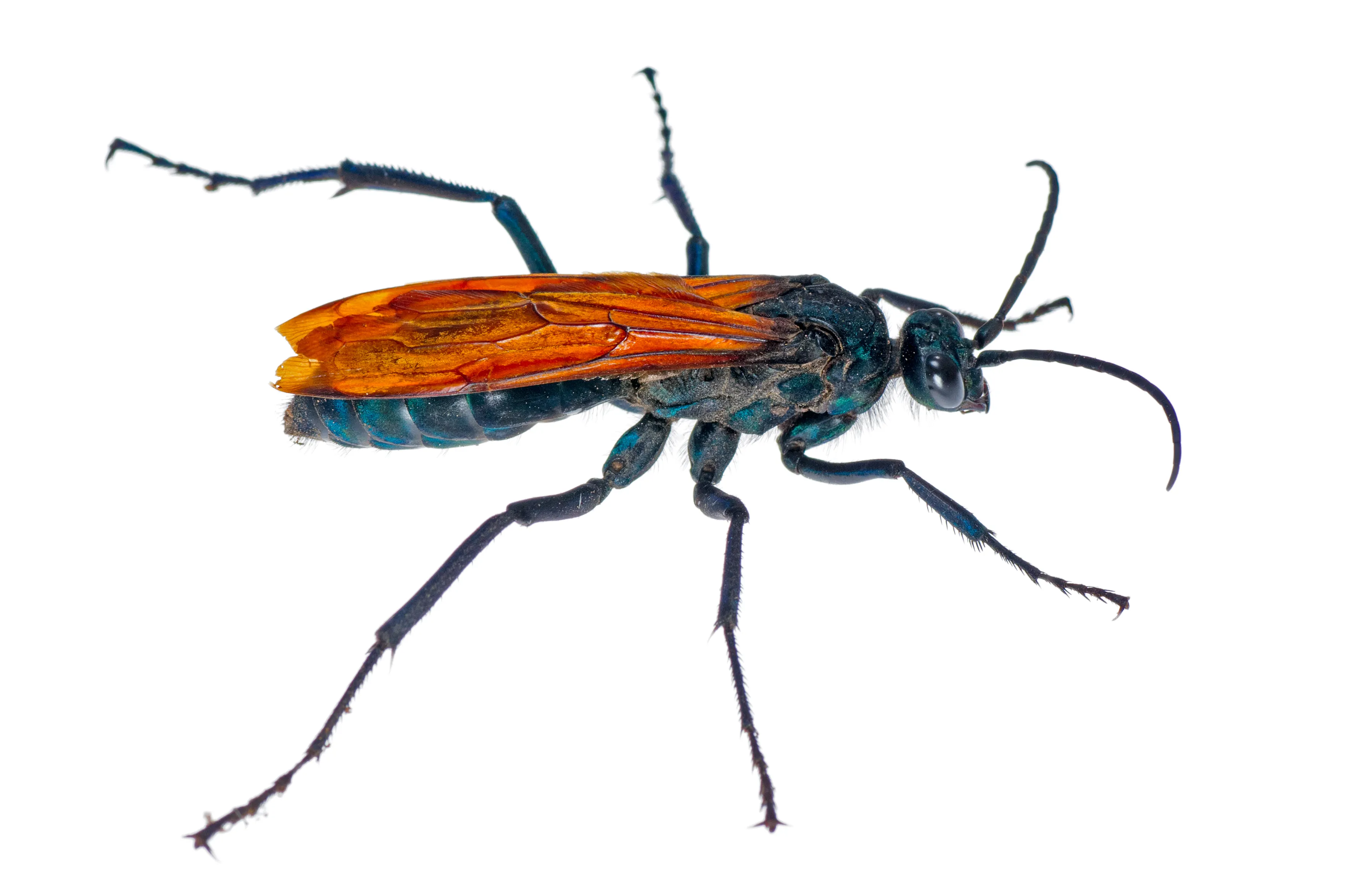
Tarantula hawks are primarily found in the southwestern United States, including states like Arizona, New Mexico, and Texas, as well as parts of Central and South America. They prefer warm, dry climates that support tarantula populations. Their habitats include deserts, scrublands, and open areas where they can easily hunt for their prey. These wasps are adapted to these environments, with features like strong legs for digging and a tough exoskeleton to protect them from the harsh conditions. The specific distribution varies depending on the species and the availability of tarantulas, but they are generally a sign of a healthy, thriving ecosystem.
Quick Visual Identification Guide
Identifying tarantula hawks by sight requires careful observation of their size, coloration, and key features. While multiple species exist, their general appearance remains consistent enough to allow for quick identification. Using a combination of these visual cues helps differentiate tarantula hawks from other similar-looking insects. It is advisable to use visual identification in conjunction with behavioral observations and habitat analysis. This section breaks down the most important visual elements to look for when trying to identify a tarantula hawk, helping you confirm your sightings confidently.
Size and Appearance
Tarantula hawks are among the largest wasps, with females often measuring up to 2 inches in length, not including their antennae. Males are typically smaller. Their imposing size is a key characteristic and a significant factor in distinguishing them from other wasps. Their robust bodies and powerful legs further emphasize their predatory nature. The sheer size alone should alert you to the possibility of encountering a tarantula hawk. When combined with other features, the overall appearance of a tarantula hawk is striking and easily memorable, making them stand out in their environment.
Coloration & Patterns
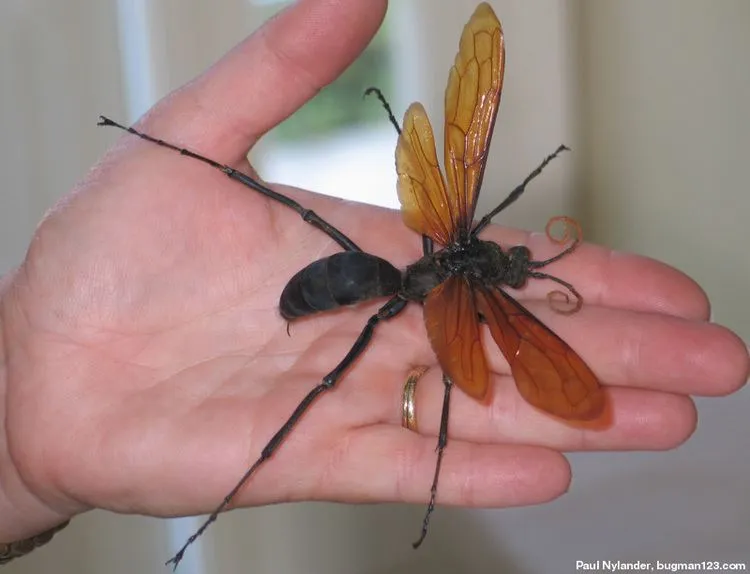
Tarantula hawks are characterized by their striking coloration, typically featuring a metallic blue-black body and vibrant, orange or rust-colored wings. This combination makes them easily recognizable in flight. The contrast between the dark body and bright wings is a distinct visual marker. Some species may exhibit slight variations in color, but the general pattern remains consistent. This coloration serves a warning to potential predators, signaling their potent sting. Pay attention to the color of the wings and the body; this will help distinguish between species. This unique color combination makes them easily identifiable in the field, even from a distance.
Key Features to Spot
In addition to their size and coloration, several key features can aid in tarantula hawk identification. Notice their long, spiny legs, adapted for digging and handling tarantulas. They have strong mandibles and a narrow waist. The antennae are also quite noticeable, and help in sensing their environment. Look for the characteristic wing venation patterns; these patterns are unique and can help differentiate species. The overall body shape, including the size of the abdomen, is also significant. Combining these details with the general appearance greatly increases the accuracy of the identification. These features, combined with size and color, provide a comprehensive guide to spotting a tarantula hawk.
Behavioral Clues for Identification
Observing the behavior of a potential tarantula hawk offers crucial clues for identification. Their flight characteristics, interaction with tarantulas, and habitat preferences provide additional verification. Recognizing these behavioral patterns ensures a more reliable identification, helping you confirm your sightings. By closely monitoring these aspects of their behavior, you can significantly enhance your ability to identify these fascinating wasps. This knowledge will help you appreciate their complex life cycle and their role within the ecosystem. It is important to observe them from a safe distance to avoid any disturbances, which could impact their natural behaviors.
Flight Characteristics

Tarantula hawks have a distinctive flight pattern. They fly in a long, erratic manner, often darting around and quickly changing directions. This flight style helps them locate tarantulas and navigate their environment. They are powerful fliers, enabling them to cover large distances in search of prey. Observe their flight path and speed. A tarantula hawk’s erratic flight is quite different from the more direct flight of many other wasps. This behavioral feature alone can help you identify them quickly, even if you only catch a brief glimpse. Their wing beat is rapid and the wings create a noticeable humming sound.
Interaction with Tarantulas
The interaction between tarantula hawks and tarantulas is a critical element. Female tarantula hawks hunt tarantulas to paralyze them with their sting. They then drag the paralyzed tarantula to a burrow, where they lay a single egg on its abdomen. The wasp larva hatches and consumes the tarantula from the inside. If you see a large wasp dragging a tarantula, it is likely a tarantula hawk. Observing this behavior in the wild, from a safe distance, provides compelling confirmation of the wasp’s identity. Spotting this hunting behavior is a clear indicator. This specific interaction is unique to tarantula hawks.
Habitat and Location
The habitat and geographic location play a crucial role in identifying tarantula hawks, as their presence is closely linked to the availability of tarantulas and suitable environmental conditions. Knowing the typical habitats and distribution patterns allows you to narrow down the possibilities. These wasps favor specific environments that support their predatory lifestyle. Their presence in a particular area often serves as an indicator of ecological health. Understanding their preferred locations makes it easier to find and identify tarantula hawks in their natural settings. Habitat information allows you to focus your search efforts and increase your chances of spotting these impressive insects.
Geographic Distribution

Tarantula hawks are primarily found in warmer regions, especially in the southwestern United States and parts of Central and South America. Knowing this distribution helps narrow down the search. Within the U.S., they are commonly seen in states such as Arizona, New Mexico, Texas, and California. While different species may vary slightly in their exact geographic ranges, the overall distribution remains consistent with warmer climates. When observing these wasps, always consider the geographic location. Sightings outside of these regions are rare. Knowing the typical distribution is essential for accurate identification and helps you avoid misidentification with other insects.
Preferred Habitats
Tarantula hawks favor arid and semi-arid habitats, including deserts, scrublands, and open areas. These environments typically support tarantula populations, the primary food source for the wasps. Look for areas with sandy or loamy soil where the wasps can dig burrows to host their eggs. They also frequent areas with sparse vegetation and rocky outcrops, which provide shelter for both the wasps and their prey. When trying to identify tarantula hawks, search in habitats similar to where tarantulas are commonly found. These wasps are not typically found in densely wooded forests. The specific habitat preferences vary, but they often overlap, making it easier to predict their presence.
Tarantula Hawk Species
While the identification of tarantula hawks is often based on general characteristics, there are multiple species, each with its unique attributes. Knowing common species and differentiating features is helpful for detailed identification. Even though they share many common traits, certain visual and behavioral traits can help distinguish the different species from each other. Familiarizing yourself with species-specific traits increases your identification accuracy. It provides a deeper understanding of the biodiversity within the tarantula hawk family and enables more precise observations. These differences in species add another layer to the fascination of studying tarantula hawks.
Common North American Species
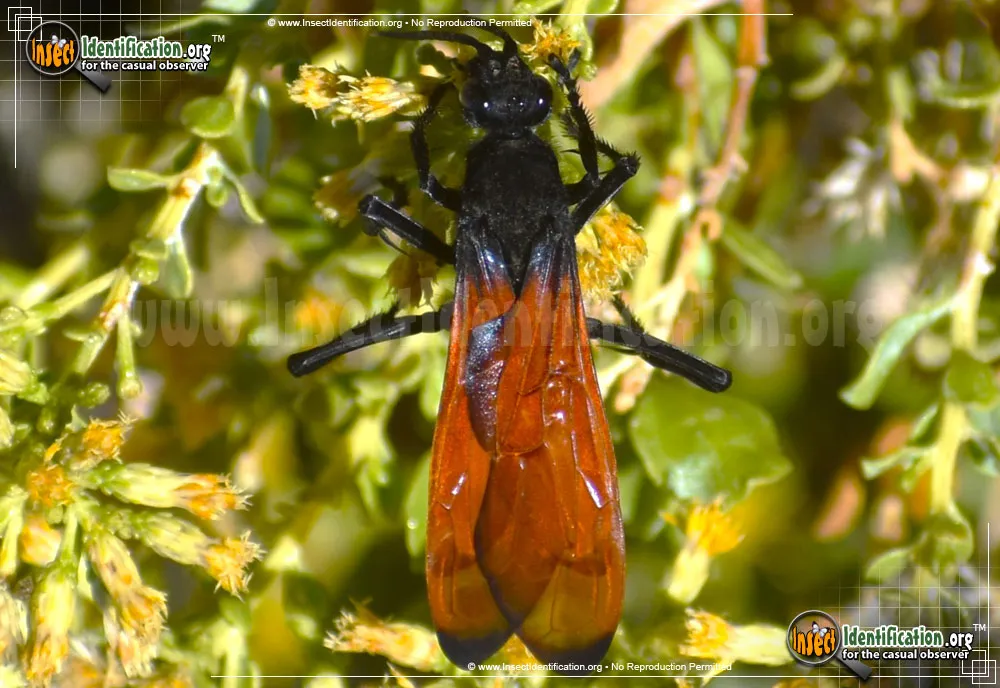
The most commonly observed tarantula hawk species in North America includes the Pepsis grossa and Pepsis thisbe. These species are frequently seen in the southwestern U.S. P. grossa is known for its larger size and deeper blue-black coloration. P. thisbe is often slightly smaller, and while both species share similar patterns of orange wings. Recognizing the specific characteristics of the dominant species will greatly improve the speed and accuracy of your identification. By focusing on the distinctions between the most common species, identification becomes much more straightforward. These species are well-studied, and their behaviors and characteristics are widely documented.
Identifying Different Species
Identifying different tarantula hawk species requires a closer inspection of visual clues. Look at the subtle differences in body size, the precise hue of the wing color, and fine details of the wing veins. Some species may exhibit varying degrees of iridescence on their bodies. The antennae shape and length can also be differentiating features. Using a good field guide with detailed illustrations and descriptions is beneficial. Observing the habitat and location can also help to narrow the possibilities, as different species are typically found in different regions or micro-habitats. Consulting with entomologists or insect experts will help with more advanced identification.
Tips for Safe Observation
Observing tarantula hawks safely is essential, given their potent sting. Understanding the necessary precautions and knowing what to do in case of a sting can prevent unnecessary risks. These wasps are not naturally aggressive and will generally avoid human contact. However, taking the right safety measures will make sure that your experience is enjoyable and without incident. Responsible observation will allow you to study their behavior without harming the wasps or endangering yourself. Prioritizing safety will make your encounters with tarantula hawks memorable and informative.
Safety Precautions
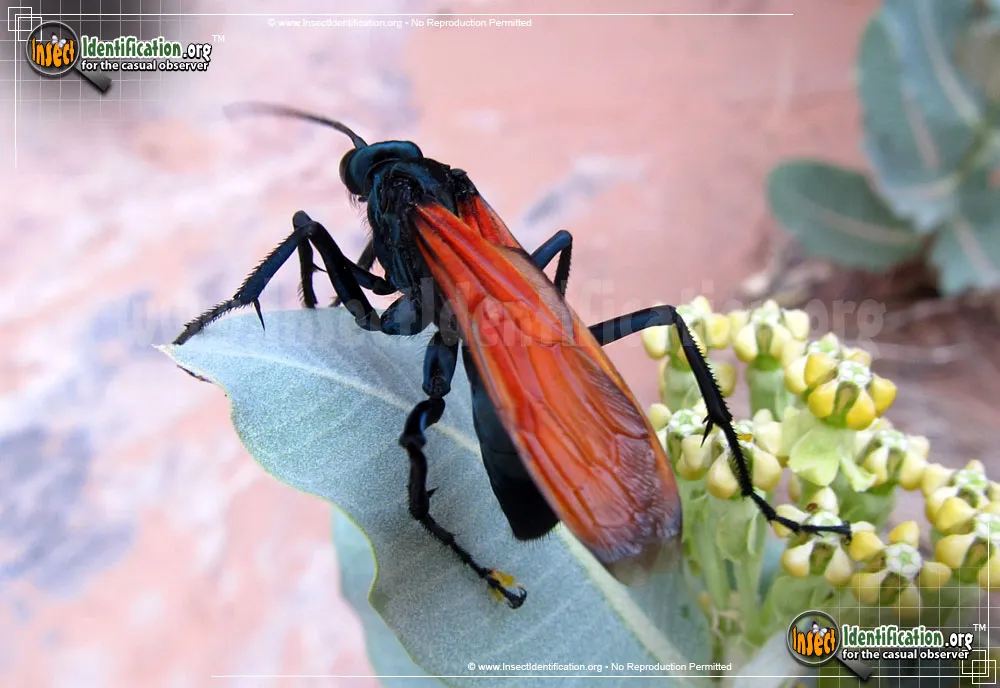
Maintain a safe distance. Avoid any sudden movements that might provoke the wasp. Do not attempt to handle or touch them. Wear protective clothing, like long sleeves and pants, if you are in an area where tarantula hawks are present. Be aware of your surroundings, and be cautious of nests or burrows in the ground, where the wasps may be more active. Educate yourself on their behavior to anticipate potential risks. Keep children and pets away from the area. Avoid wearing strong perfumes or scented products. Observing from a safe distance will ensure you can study the tarantula hawks’ behavior. Taking these safety precautions will give you the best chance of experiencing the encounter without incident.
What to Do if Stung
If stung by a tarantula hawk, seek immediate medical attention. The sting is extremely painful and can cause a severe reaction in some individuals, though deaths are rare. While the pain subsides after a few hours, seek medical assistance to address any severe allergic responses. The initial reaction to the sting is intense pain. Remove the stinger if it remains embedded. Applying ice packs can help reduce swelling and pain. Monitor yourself for signs of an allergic reaction, such as difficulty breathing or swelling. If you experience any allergic symptoms, seek immediate medical care. Even without allergic reactions, medical care is recommended. Consulting with a healthcare professional ensures proper care and addresses potential complications.
In conclusion, identifying tarantula hawks involves a combination of visual cues, behavioral observations, and understanding of their habitat. By following the steps outlined in this guide, anyone can quickly learn to recognize these impressive wasps, appreciate their role in the ecosystem, and observe them safely. Always prioritize safety and enjoy the amazing experience of encountering these impressive insects. Continued learning and responsible observation are vital for ensuring both your safety and the preservation of these fascinating creatures. Happy observing!
